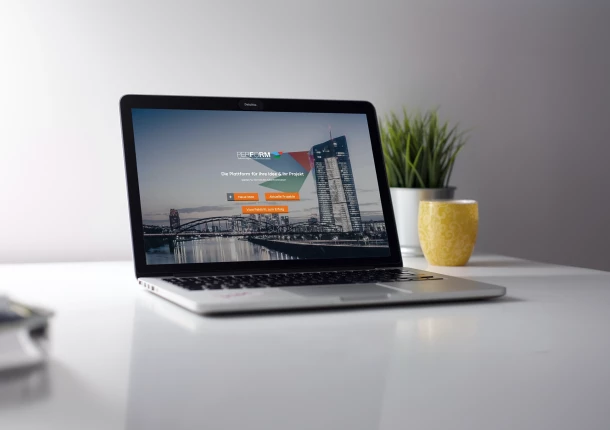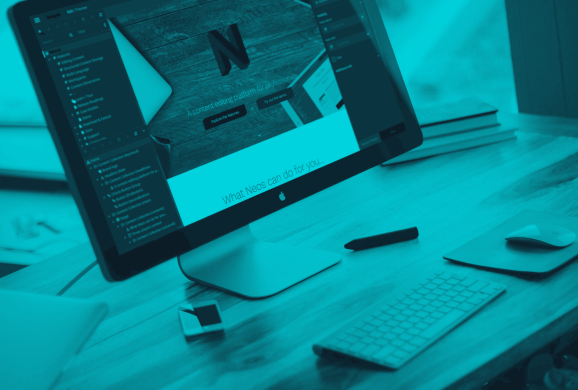Wir arbeiten für
Online-Sichtbarkeit für Technologiethemen: Gemeinsam gestalten wir die Zukunft
Wir optimieren das Herzstück Ihrer Online-Präsenz: Ihre Website. Unabhängig davon, ob sie bereits besteht oder neu entwickelt werden muss. Seit mehr als 15 Jahren sind wir darauf spezialisiert, Webauftritte von B2B-Unternehmen in interaktive Kommunikations-, Vertriebs- und Serviceplattformen zu verwandeln.
Wir sind Ihr proaktiver Partner, insbesondere bei komplexen Themen. Dabei betrachten wir die Marketingstrategie als Ganzes und setzen sie nicht nur operativ um.
Das Ergebnis der Zusammenarbeit mit uns: erhöhte Sichtbarkeit, mehr Neukundenanfragen, steigende Umsätze und die erfolgreiche Gewinnung neuer Fachkräfte.
Getting the Website Boost
Der Relaunch Ihrer B2B-Website steht bevor? Sie suchen einen Partner auf Augenhöhe, der gemeinsam mit Ihnen eine ganzheitliche Strategie entwickelt - von Struktur über Design und Technologie bis hin zu SEO und Content - und diese auch umsetzt?
Dann sind Sie bei uns genau richtig!
Spot on: Content Kampagnen
Sie möchten ein bestimmtes Thema oder einen neuen Service ins Rampenlicht rücken? Wir helfen Ihnen dabei! Zusammen mit Ihnen entwickeln wir Online-Kampagnen für anspruchsvolle Dienstleistungen.
Unser Ziel: komplexe Themen nutzerfreundlich und ansprechend aufzubereiten und gezielt über die richtigen Kanäle zu verbreiten.
Das Wichtigste zuerst: die Strategie
Bevor wir eine Website neu gestalten oder eine Kampagne entwickeln, steht die strukturelle, planerische und strategische Arbeit im Vordergrund. Dabei ist es entscheidend, nicht nur Ihre Perspektive als Unternehmen, sondern vor allem auch die Ihrer Kundinnen und Kunden zu berücksichtigen.
Wichtig ist: Alle Stakeholder sollten die gleichen Ziele verfolgen und ein gemeinsames Verständnis über die angestrebten Ergebnisse haben. Dies stellen wir durch einen kompakten Strategieprozess sicher, den wir gemeinsam gestalten.
»Wir erwarteten von unserer Online-Agentur keine Insellösungen für einzelne Probleme, sondern die Umsetzung konkreter Maßnahmen mit Blick auf die gesamte Marketingstrategie. Das Team von portrino überzeugt hier auf ganzer Linie.«
Marketing Manager — KÜPPERSBUSCH
Websites und Kampagnen — weitergedacht
Für eine sorgenfreie Online-Präsenz: Wartung und Betreuung der PERFORM Projekt-Website
Website-Relaunch von A bis Z — vom Design bis zur technischen Umsetzung und Erstellung der Inhalte



Karriere bei portrino
Wir verbinden Leidenschaft mit Qualität und machen B2B-Unternehmen durch beeindruckende Weblösungen und erfolgreiche Marketingkampagnen sichtbar. Dafür sind wir immer auf der Suche nach neuen Talenten, die mit uns wachsen wollen.
Interessiert? Entdecke unsere aktuellen Stellenangebote und werde Teil unseres großartigen Teams!
Expertenwissen für Mitgestalter:innen der Zukunft

Lassen Sie uns ins Gespräch kommen …
Sie haben Fragen oder sind an einer konkreten Zusammenarbeit interessiert? Teilen Sie uns Ihre Gedanken, Fragen oder Anliegen mit — wir freuen uns auf Ihre Nachricht.








